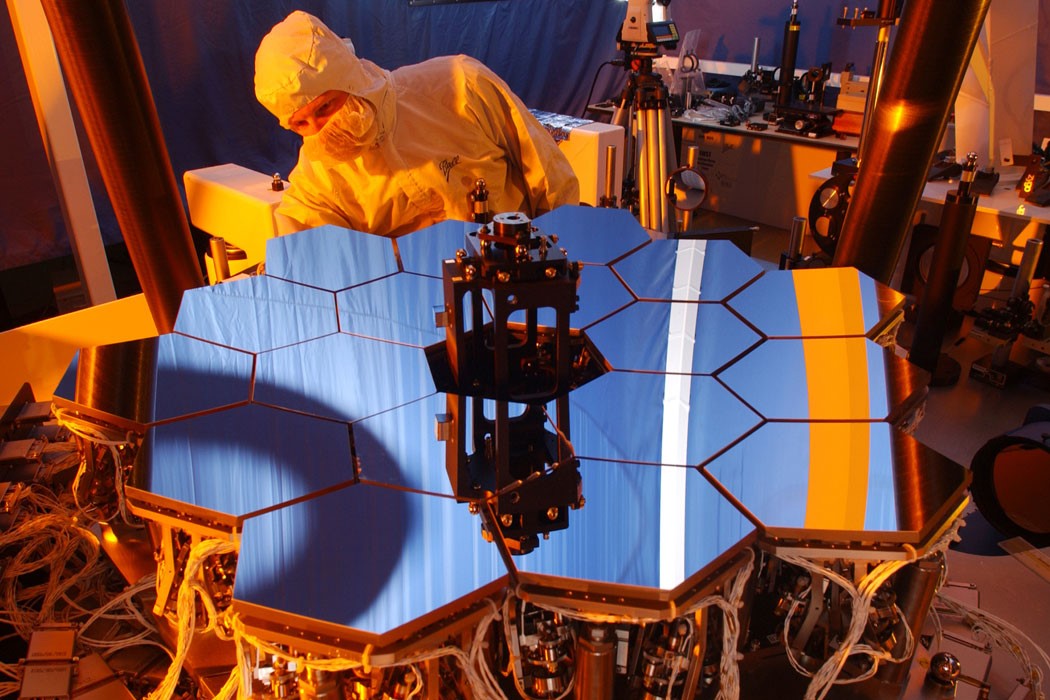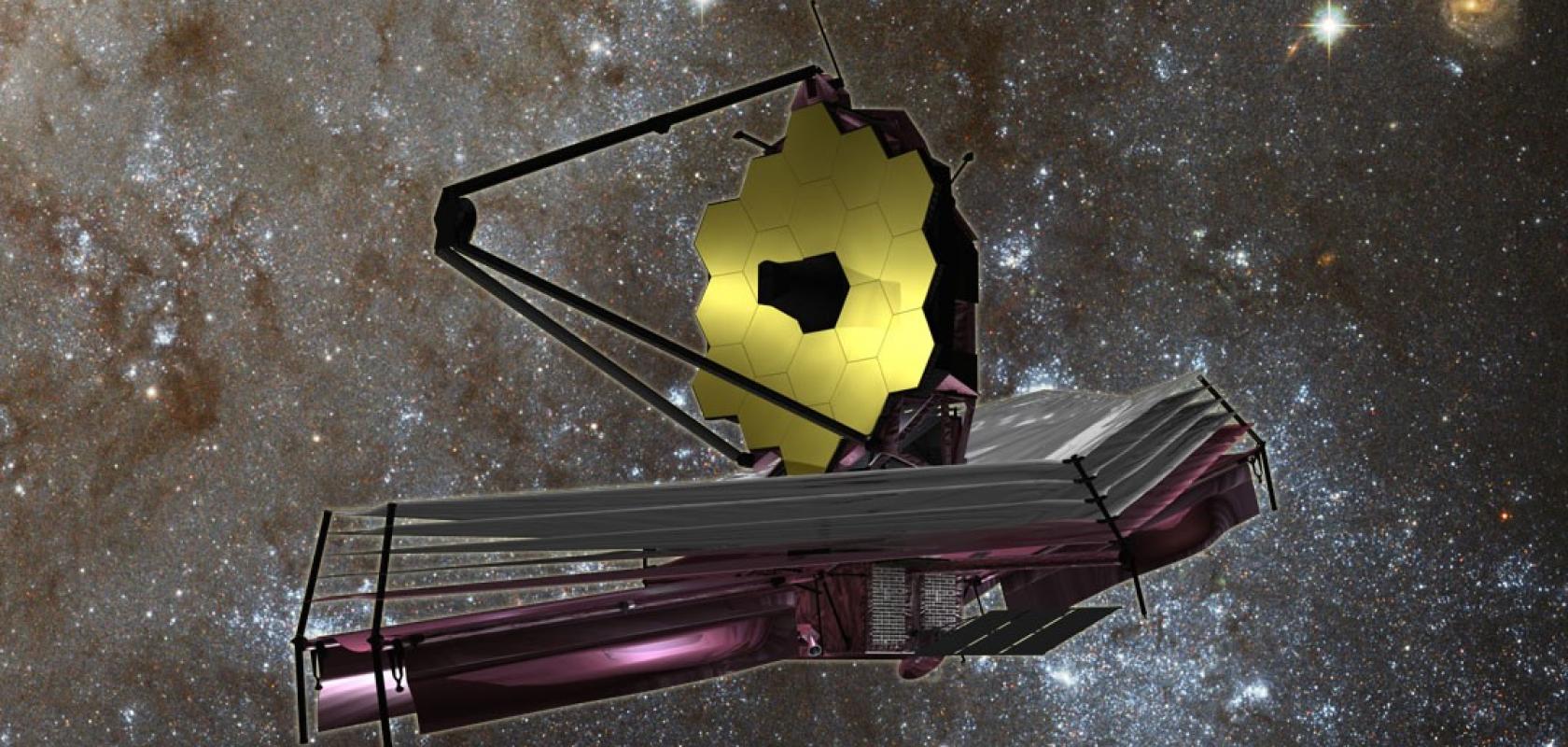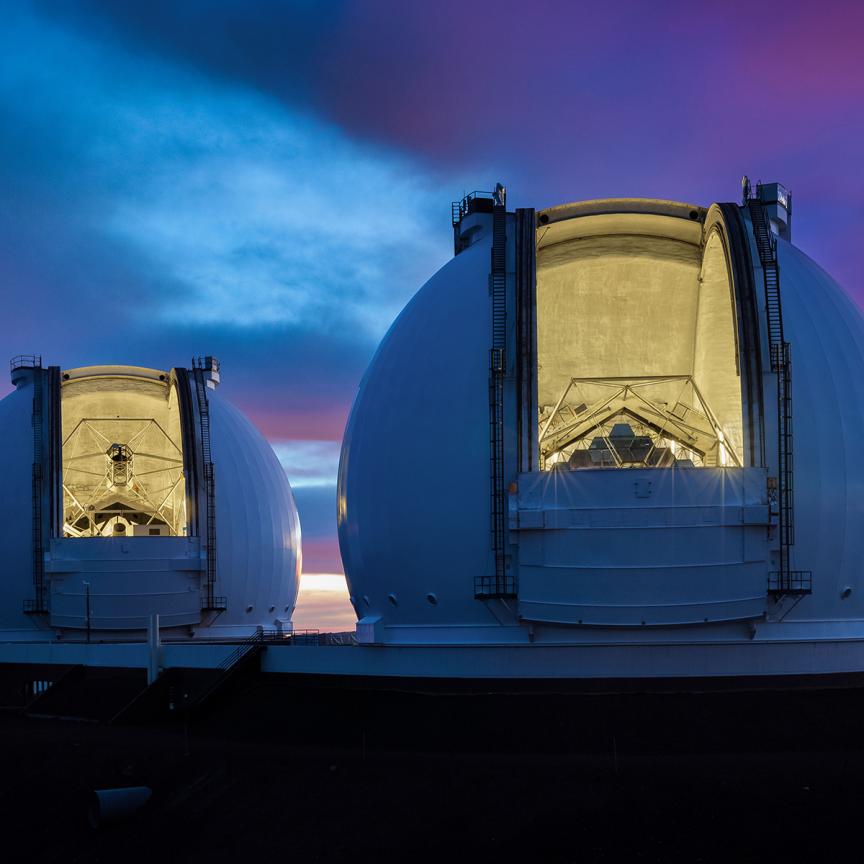On 3 February, NASA announced that the first photons from a star have made their way through the James Webb’s Space Telescope (JWST), recorded by its near infrared camera.
These NIR camera readings - confirming the telescope works - mean scientists on the ground can now start aligning Webb’s 18 mirrors to focus on an area of interest for NASA scientists - a star similar in size and brightness to our Sun, the 84406. The alignment process will take around three months.
NASA’s JWST launched on the 25th of December 2021 from Europe’s Spaceport in French Guiana, South America. A joint effort with ESA (European Space Agency) and the Canadian Space Agency, the Webb Observatory is NASA’s flagship mission to seek the light from the first galaxies in the early universe and to explore our own solar system, as well as planets orbiting other stars.
‘The promise of Webb is not what we know we will discover; it’s what we don’t yet understand or can’t yet fathom about our universe. I can’t wait to see what it uncovers!’ said NASA Administrator Bill Nelson.
But that was just the start of a hugely complex process that saw the world’s largest space science observatory begin a six month commissioning process in orbit. At the end of this process, the JWST will begin to deliver its first images to scientists. So far the telescope has completed the deployment of its large mirror and completed its trip to approximately 1 million miles from the earth.
The JWST is an example of the culmination of years of work in technology development and research into advancing photonics technologies.
From coatings for the mirrors and optical components to helping to deploy and align the largest mirror ever launched into space or supporting the development of near-infrared cameras that will underpin the new telescope’s imaging systems. Researchers, engineers and scientists have worked for several years to advance the photonics technologies that underpin the JWST mission for space exploration.
The JWST carries four state-of-the-art science instruments with highly sensitive infrared detectors. The telescope will be used to study infrared light from celestial objects with much greater clarity than ever before. The premier mission is the scientific successor to NASA’s iconic Hubble and Spitzer space telescopes, built to complement and further the scientific discoveries of these and other missions.
‘The launch of the Webb Space Telescope is a pivotal moment – this is just the beginning for the Webb mission,’ said Gregory Robinson, Webb’s programme director at NASA Headquarters.

Credit: NASA
PI technology aligns the largest scientific space telescope ever built
Orbiting approximately one million miles from Earth, the JWST is the largest telescope ever launched into space - in its unfolded operational configuration it is nearly the size of a tennis court. The JWST’s lightweight deployable primary mirror is segmented into 18 hexagonal pieces on a hinged surface over 21 feet in diameter (6.5 meters).
During the assembly of the 18 segments that must work as one single mirror once unfolded in space, NASA engineers make use of a robotic arm (Primary Mirror Alignment and Integration Fixture) precisely controlled in 6 degrees of freedom by a custom hexapod (Stewart Platform) from PI. Gold-coated beryllium was chosen for the segments, for its high stiffness, low weight, and properties to withstand the extremely low temperatures in outer space. Each segment also has a thin gold coating to reflect infrared light.
Positioned at the end of the robotic arm, the custom hexapod has a 200kg load capacity and sub-micrometre resolution, to precisely position the JWST mirror segments during assembly. Hexapods with their programmable centre of rotation (pivot point) are often used for precise multi-axis alignment tasks, from nanometre-sized structures in silicon photonics and fibre optics to large mirrors and reflectors in astronomy.
Calibrating cameras for exoplanet discovery
To complete its primary mission of searching for new undiscovered exoplanets the JWST needs extremely accurate infrared cameras that can filter out the white noise created by stars in the area that is being observed.
In the Large UV/Optical/IR Surveyor (LUVOIR) Tech Note Series from August 5, 2016, Stuart Shaklan notes that ‘Stellar coronagraphs are instruments designed to suppress the veiling glare of starlight so that faint planets can be seen adjacent to their parent stars. The desired level of suppression is 10-10 for imaging of an Earth-like planet around a Sun-like star; that is, the residual scatter in the image plane after diffraction and wavefront control is 10 billion times below the level of the incident starlight.’
In order to create the required technology to support this kind of imaging system, NASA and its partners have been working for several years on the development of more accurate systems using various testbed systems such as the Decadel Survey Testbed (DST).
NKT Photonics SuperK supercontinuum white light lasers have been used in multiple locations over many years of the JWST development and deployment. This includes testing the aft-optics system (telescope’s tertiary mirror and fine steering mirror) and calibrating NIR cameras, such as the JWST’s Near Infrared Camera (NIRCam) coronagraph. The lasers are also used in the optical simulator and many of the testbed and additional facilities at the Johnson Space Center and NASA’s Goddard Space Flight Center.
A paper presented at SPIE Optical Engineering + Applications, 2019, entitled Testbed demonstration of high-contrast coronagraph imaging in search for Earth-like exoplanets by Byoung-Joon Seo et al highlights the work that has been done to increase the accuracy and precision of this instrument before it was launched as part of the JWST.
The authors state: ‘The goals of National Aeronautics and Space Administration (NASA)'s next generation space coronagraph missions are aligned with the search for habitable Earth-like exoplanets and their direct imaging. Achieving this goal requires not only a large aperture telescope such as LUVOIR and Habitable Exoplanet Observatory (HabEx) but also a high performance coronagraph instrument.’
‘Direct imaging of an Earth-like exoplanet requires starlight suppression with a contrast ratio on the order of 1 x 10-10 at small angular separations of 100 milliarcseconds or less in visible light with more than 50 nm bandwidth.
The paper also reports that this level of coronagraph performance can be obtained by several key technological improvements including a stable Deformable Mirror (DM), optimised coronagraph design, sensitive detectors, mechanical and thermal stability, and an advanced wavefront control algorithm.
Over the course of the research project, the participants were successfully able to increase the accuracy using the DST facility which has two deformable mirrors and is equipped with the Low Order Wavefront Sensing and Control (LOWFS/C) subsystem to sense and correct the dynamic wavefront disturbances.
The paper states: ‘As of January 2019, we repeatedly obtain convergence below 4 × 10-10 mean contrast with 10 per cent broadband light centred at 550 nm in a 360 degrees dark hole with a working angle between 3 λ/D and 9 λ/D. We show the key elements used in the testbed and the performance results with associated analysis.’


